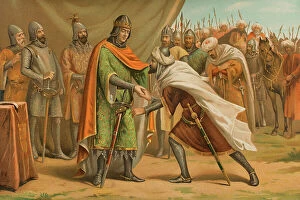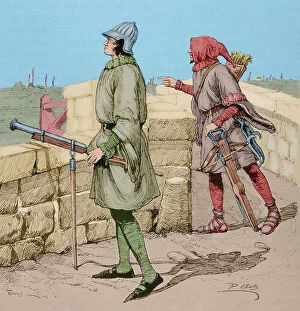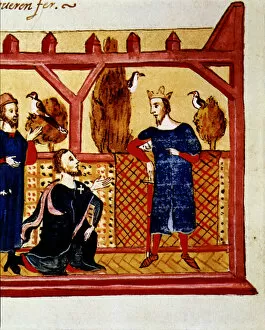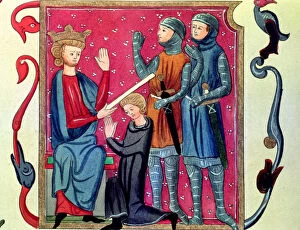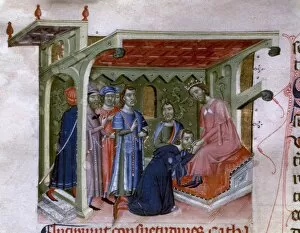Vassalage Collection
Vassalage, a system deeply rooted in medieval Europe, played a crucial role in shaping the political landscape of the time
All Professionally Made to Order for Quick Shipping
Vassalage, a system deeply rooted in medieval Europe, played a crucial role in shaping the political landscape of the time. One notable example is the Conquest of al-Andalus by Ferdinand the Saint, where vassals pledged their loyalty to their lord and fought alongside him in battle. Soldiers of Acostamientos, armed with culverins and crossbows, stood as formidable warriors on the battlefield. The ceremony of investiture of a Knight was an esteemed event that symbolized loyalty and honor. It marked the moment when a knight swore allegiance to his lord and received his title. This act solidified their bond and commitment to protect one another. In an interview held in Alcaniz between King James I the Conqueror and Hugo Forcalquer, discussions revolved around vassalage's significance within society. The Usatges of Barcelona manuscript shed light on Catalonia's customs regarding this feudal practice. The Llibre Verd (Green Book), also known as the Book of Privileges for the City Of. . , documented various privileges granted by kings to cities under their rule. These privileges often reinforced vassalage relationships between monarchs and city-states. Coronations were grand affairs that showcased vassalage at its peak. Garci Ximenez's coronation exemplified this tradition as he knelt before his lord while being crowned king – a symbolic gesture representing submission and fealty. Even beyond national borders, acts of homage occurred between rulers from different realms. Philippe VI de Valois rendered homage to Edward III during their encounter – an acknowledgment that highlighted Edward III's position as Philip VI's liege lord. Delivery of gifts was yet another aspect tied closely to vassalage; it demonstrated respect towards one's superior or ruler. Miniatures depicting such scenes depicted nobles presenting lavish offerings to kings as tokens of loyalty. Throughout history, these instances illustrate how vassalage shaped the political and social fabric of medieval Europe.

